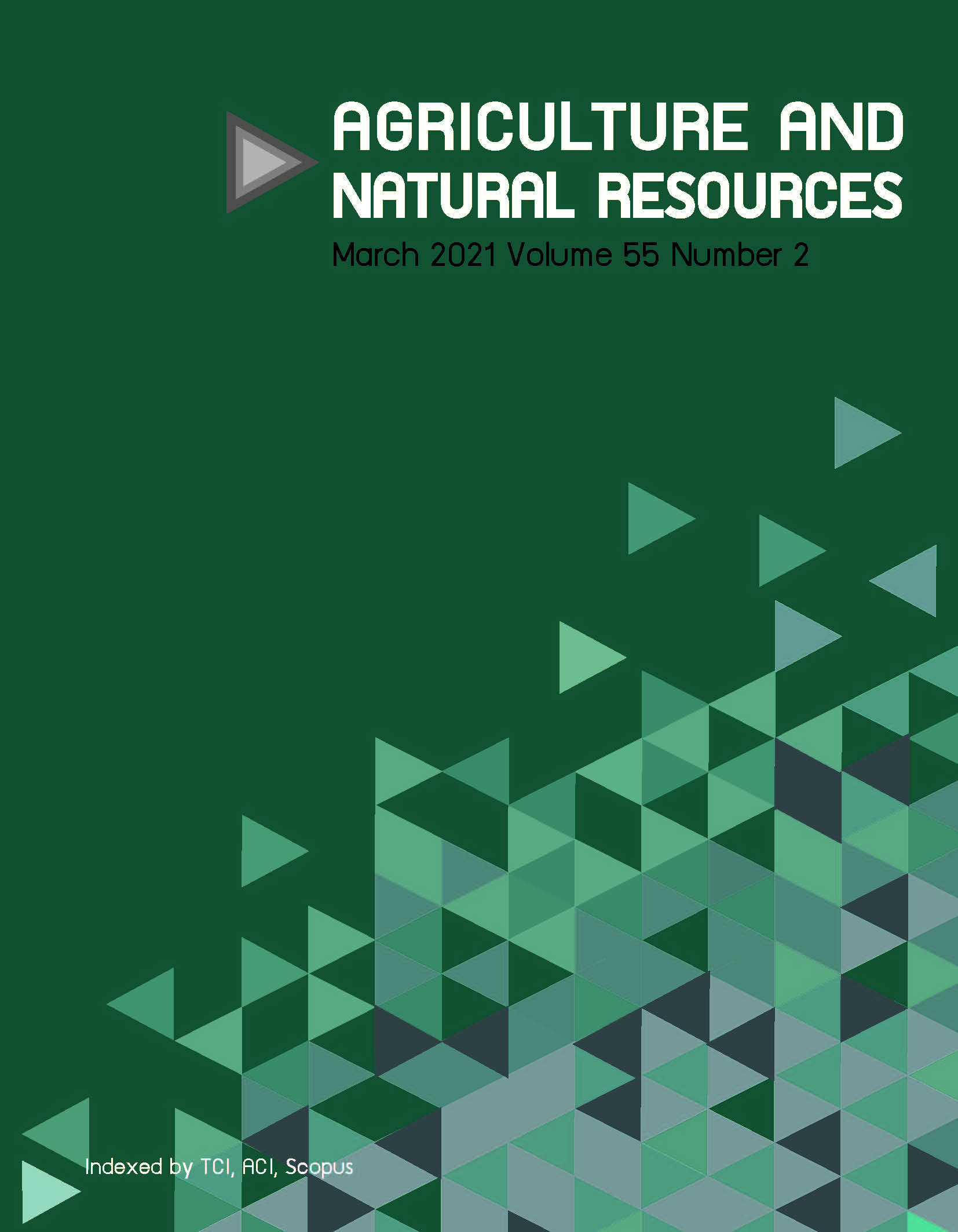Spatial distribution characteristics and types of salt-affected soils spots developed on alluvial fan complex over old marine sediment, Thailand
Keywords:
Old marine sediment, Orthographic map, Spatial analysis, Types of salt-affected soilsAbstract
Salt-affected soils are universally known as one of the most important problematic soils causing a negative impact on agricultural lands worldwide. Thus, the aims of the current were: 1) to elucidate the spatial distribution of salt-affected soils, 2) to investigate the spatial factors impacting the distribution of salt-affected soils and 3) to classify the types of salt-affected soils. The study sites were located in Kamphaeng Saen district, Nakhon Pathom province, Thailand where the soils have developed under old marine sediment. Orthographic mapping was used to identify the locations of salt-affected soils; subsequently, 38 locations were selected. At these sites, soil samples were collected using a hand auger at four depths (0−20 cm, 30−50 cm, 60−80 cm, 80−120 cm) for analysis of their chemical properties. The ArcGIS software was used to analyze the spatial factors influencing the distribution of salts comprising the irrigation canal system, road construction, elevation and surface slope of the study area. The results indicated that the majority of salt-affected soils appeared where there was a salt crust, bare surface and halophytic plants were present, which all acted as environmental indicators. Generally, these soils were spatially distributed in the north of Kamphaeng Saen district, Nakhon Pathom province; the irrigation canal system, road construction and elevation may be regarded as the spatial factors leading to the occurrence of the salt-affected soils. Furthermore, these salt-affected soils were deep, moderately developed with possessing the ranges of ECe, SAR and ESP values from 0.20–74.70 dS/m, 2.30–85.09 and 2.74–113.23%, respectively. Thus, our finding indicated that the types of these salt-affected soils could be classified into two groups: 1) saline-sodic soils appearing at 34 study locations and 2) saline soils appearing at 4 study locations.
Downloads
Published
How to Cite
Issue
Section
License

This work is licensed under a Creative Commons Attribution-NonCommercial-NoDerivatives 4.0 International License.
online 2452-316X print 2468-1458/Copyright © 2022. This is an open access article under the CC BY-NC-ND license (http://creativecommons.org/licenses/by-nc-nd/4.0/),
production and hosting by Kasetsart University of Research and Development Institute on behalf of Kasetsart University.







